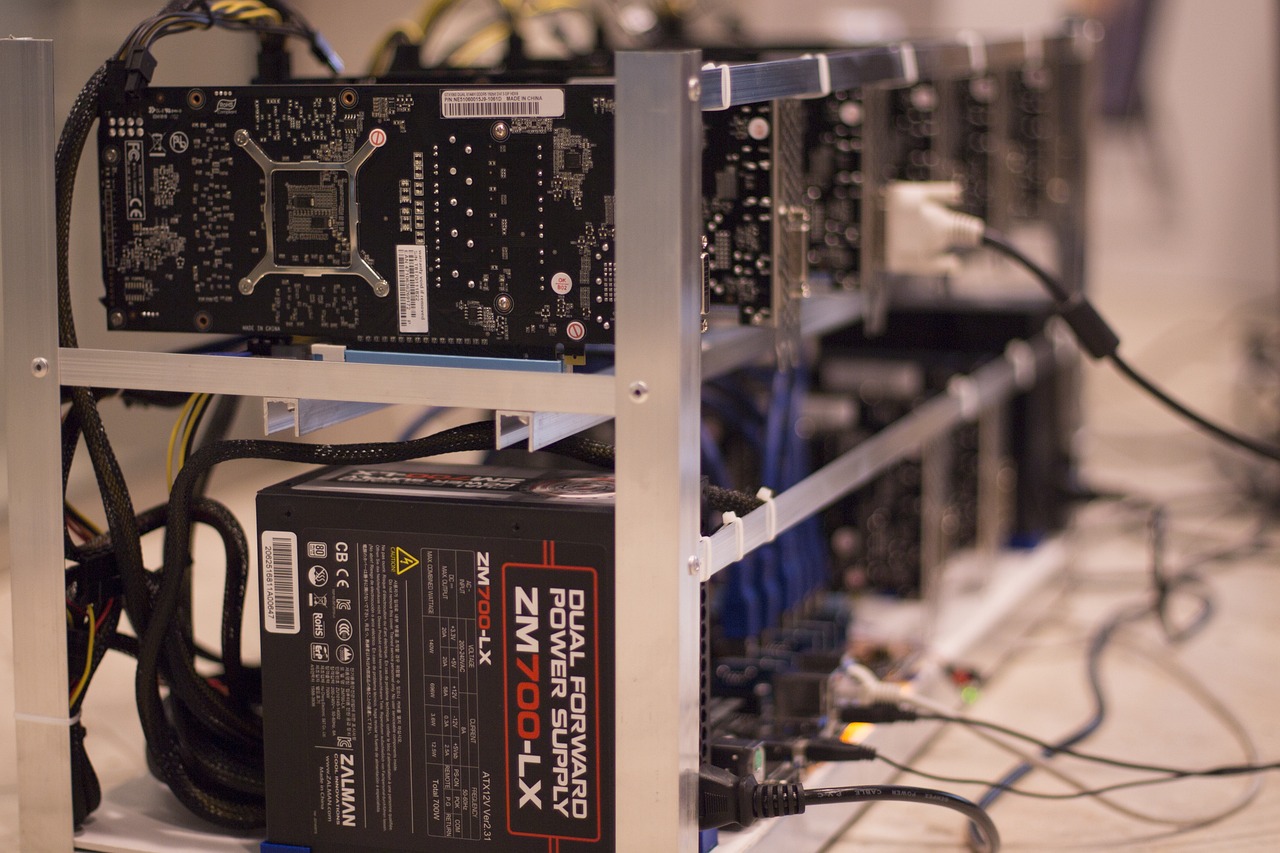The Future of Cross-Border Crypto Transactions
As the world becomes increasingly interconnected, the need for efficient and cost-effective methods of transferring value across borders has never been more critical. Enter cryptocurrency, a digital revolution that is reshaping the landscape of international finance. Imagine being able to send money to a friend in another country as easily as sending a text message. This is the promise of cross-border crypto transactions, which are not only faster but also significantly cheaper than traditional banking methods. With the rise of cryptocurrencies, we are witnessing a transformation in global commerce, and the implications are profound.
In this article, we will delve into the evolving landscape of cross-border cryptocurrency transactions, exploring their potential, the challenges they face, and the technology driving their growth in the financial sector. From the increasing adoption of blockchain technology to the emergence of stablecoins, the future looks bright for those willing to embrace this digital frontier. However, as with any innovation, there are hurdles to overcome, particularly in the realm of regulation and legal frameworks. So, what does the future hold for cross-border crypto transactions? Let's explore the possibilities!
Cryptocurrencies are becoming increasingly popular in international trade, offering lower transaction fees and faster processing times compared to traditional banking methods, thereby transforming global commerce. For instance, while a typical bank transfer can take several days and incur hefty fees, a cryptocurrency transaction can be completed in mere minutes for a fraction of the cost. This efficiency is a game changer for businesses operating on a global scale.
Moreover, the decentralization of cryptocurrencies means that they are not subject to the same fluctuations and regulations as traditional currencies. This feature is particularly appealing for businesses in emerging markets, where currency instability can wreak havoc on international transactions. The ability to transact in a stable digital currency can provide a level of predictability that is often lacking in traditional finance.
As cryptocurrencies gain traction, regulatory frameworks are struggling to keep pace, creating uncertainties that could hinder the growth of cross-border transactions and affect market participants. Governments around the world are grappling with how to regulate this new form of currency, and the lack of a unified approach can lead to confusion and risk for businesses and individuals alike.
Some countries have embraced cryptocurrencies, creating favorable environments for innovation, while others have imposed strict regulations or outright bans. This patchwork of regulations can create challenges for businesses looking to operate internationally. Imagine trying to navigate a maze where the walls keep shifting—this is the reality for many companies in the crypto space today.
At the heart of cryptocurrency transactions lies blockchain technology, a decentralized ledger that ensures security and transparency. Understanding its role is essential for grasping the future of cross-border financial exchanges. Blockchain allows for peer-to-peer transactions without the need for intermediaries, drastically reducing the time and cost associated with traditional financial systems.
One of the most exciting applications of blockchain technology is the use of smart contracts. These self-executing contracts automate and enforce agreements, reducing the need for intermediaries in cross-border transactions. This can streamline processes and cut costs, making it easier for businesses to engage in international trade.
Various industries are adopting smart contracts for cross-border transactions, showcasing their potential to revolutionize trade agreements and enhance efficiency. For example, in the shipping industry, smart contracts can automate payments upon delivery, ensuring that all parties fulfill their obligations before funds are released. This not only reduces the risk of fraud but also accelerates the transaction process.
Despite their advantages, smart contracts face challenges such as legal recognition and technical complexities that must be addressed for widespread adoption. Many legal systems are still catching up to the concept of digital contracts, leading to uncertainty in enforcement. Additionally, the technical know-how required to create and manage smart contracts can be a barrier for smaller businesses.
Decentralized finance is reshaping the financial landscape by enabling peer-to-peer transactions without intermediaries, fostering innovation in cross-border crypto transactions. DeFi platforms are emerging as viable alternatives to traditional financial institutions, allowing users to lend, borrow, and trade directly with one another. This democratization of finance could lead to greater access to financial services for individuals and businesses in underserved regions.
Stablecoins provide a bridge between traditional finance and cryptocurrencies, offering stability and predictability, which can enhance the usability of crypto for international transactions. By pegging their value to traditional currencies or assets, stablecoins mitigate the volatility that often plagues cryptocurrencies, making them a more attractive option for cross-border transactions.
Stablecoins mitigate volatility, making them an attractive option for cross-border transactions, especially in regions with unstable currencies. They allow businesses to transact without the fear of sudden price fluctuations, providing a level of security that traditional cryptocurrencies often lack.
While stablecoins offer benefits, they also present risks, including regulatory scrutiny and reliance on underlying assets, which can impact their effectiveness in cross-border transactions. If a stablecoin's backing assets lose value or if regulatory bodies impose restrictions, it could jeopardize the stability that these coins aim to provide.
The future of cross-border crypto transactions will likely involve increased adoption, technological advancements, and evolving regulations, shaping a new era of financial interactions across borders. As more individuals and businesses recognize the advantages of using cryptocurrencies for international transactions, we can expect to see a surge in demand for these services.
In conclusion, the landscape of cross-border crypto transactions is ever-evolving, filled with both opportunities and challenges. As we navigate this digital frontier, it's crucial for stakeholders to remain informed and adaptable, ensuring that they can harness the potential of this innovative technology.
- What are cross-border crypto transactions? Cross-border crypto transactions refer to the transfer of cryptocurrency across international borders, allowing individuals and businesses to send and receive funds globally.
- How do cryptocurrencies improve international trade? Cryptocurrencies offer lower transaction fees and faster processing times compared to traditional banking methods, making international trade more efficient.
- What are smart contracts? Smart contracts are self-executing contracts with the terms of the agreement directly written into code, which can automate and enforce agreements without intermediaries.
- What are stablecoins? Stablecoins are cryptocurrencies that are pegged to traditional assets, providing stability and predictability in value, making them suitable for cross-border transactions.

The Rise of Cryptocurrency in Global Trade
Cryptocurrencies are rapidly transforming the landscape of international trade, offering a fresh and innovative approach to transactions that traditional banking systems simply can't match. Imagine a world where you can send money across borders in mere minutes, without the hefty fees and delays that come with conventional banking methods. This is not just a dream—it's the reality that cryptocurrencies are bringing to the table.
One of the most compelling advantages of using cryptocurrencies in global trade is the lower transaction fees. Traditional cross-border payments can often incur substantial costs due to currency conversions, intermediary banks, and various fees that stack up like a towering cake. In contrast, cryptocurrencies can significantly reduce these costs, allowing businesses to save money that can be reinvested into growth and development.
Moreover, the speed of cryptocurrency transactions is a game changer. While traditional bank transfers can take several days to settle, cryptocurrencies can facilitate transactions almost instantly. This is particularly beneficial for businesses that rely on quick turnarounds and need to maintain a competitive edge in the fast-paced global market. For instance, a company in the U.S. can pay a supplier in Asia without waiting for days, enhancing cash flow and operational efficiency.
However, the rise of cryptocurrencies in global trade is not just about speed and cost savings. It’s also about accessibility. Many businesses in developing countries face challenges accessing traditional banking services. Cryptocurrencies can provide these businesses with an opportunity to engage in international trade without the barriers imposed by conventional financial systems. This democratization of finance allows for a more inclusive global economy, where even small enterprises can participate in the global marketplace.
Despite these advantages, there are still hurdles to overcome. The volatile nature of cryptocurrencies can be a double-edged sword. While some businesses are willing to embrace this volatility for the potential rewards, others may hesitate to adopt cryptocurrencies due to the risk of sudden price fluctuations. To address this concern, stablecoins—cryptocurrencies pegged to stable assets—are becoming increasingly popular, providing a more predictable option for businesses engaging in cross-border transactions.
Furthermore, the integration of blockchain technology into trade processes cannot be overlooked. Blockchain provides a decentralized and secure way to record transactions, ensuring transparency and reducing the risk of fraud. As more businesses begin to understand and utilize this technology, the potential for cryptocurrencies in global trade will only continue to grow.
In summary, the rise of cryptocurrencies in global trade is reshaping how businesses operate on an international scale. With lower fees, faster transaction times, and increased accessibility, cryptocurrencies are paving the way for a new era of commerce. As the world becomes more interconnected, the adoption of cryptocurrencies will likely continue to rise, leading to exciting developments in the way we conduct trade across borders.
- What are the main benefits of using cryptocurrencies in global trade?
Lower transaction fees, faster processing times, and increased accessibility for businesses in developing countries. - Are cryptocurrencies safe for international transactions?
While they provide security through blockchain technology, the volatility of cryptocurrencies can pose risks. Stablecoins may offer a more stable alternative. - How do cryptocurrencies impact traditional banking systems?
They challenge traditional banking by providing alternative methods for transactions, potentially leading to lower fees and increased efficiency.

Regulatory Challenges Ahead
The rapid rise of cryptocurrencies has introduced a whirlwind of innovation in the financial sector, but with this evolution comes a slew of regulatory challenges that are hard to ignore. As cryptocurrencies gain traction in cross-border transactions, governments and regulatory bodies around the world are scrambling to catch up. This regulatory lag creates a landscape filled with uncertainties, leaving market participants in a state of confusion. So, what are these challenges, and how might they affect the future of cross-border crypto transactions?
First and foremost, the lack of a unified regulatory framework poses a significant hurdle. Different countries have adopted varying stances on cryptocurrencies, ranging from outright bans to complete acceptance. For instance, while nations like El Salvador have embraced Bitcoin as legal tender, others, such as China, have imposed strict regulations that limit crypto activities. This fragmented approach complicates cross-border transactions, as businesses must navigate a complex web of laws and regulations. Imagine trying to play a game of soccer with different sets of rules on each side of the field; it’s bound to create chaos!
Moreover, anti-money laundering (AML) and know your customer (KYC) regulations are becoming increasingly stringent. Financial authorities are concerned about the potential for cryptocurrencies to facilitate illicit activities, leading to a push for stricter compliance measures. This can deter businesses from engaging in cross-border transactions, as they may find themselves tangled in a web of compliance requirements that vary by jurisdiction. The challenge lies in balancing the need for security and transparency with the desire for innovation and growth.
Another significant challenge is the taxation of cryptocurrency transactions. Different countries have different tax regulations related to crypto, which can create confusion for businesses and individuals alike. For example, in some jurisdictions, cryptocurrencies are treated as assets subject to capital gains tax, while in others, they may be considered currency with different tax implications. This inconsistency can lead to double taxation or, conversely, tax evasion, as individuals try to navigate the murky waters of crypto taxation.
To illustrate these challenges, consider the following table that summarizes the regulatory approaches of a few key countries:
| Country | Regulatory Approach | Key Regulations |
|---|---|---|
| United States | Mixed | SEC, CFTC regulations |
| China | Restrictive | Ban on crypto trading and ICOs |
| El Salvador | Supportive | Bitcoin as legal tender |
| European Union | Regulatory development | MiCA proposal |
As we look to the future, it’s clear that regulatory challenges will continue to shape the landscape of cross-border crypto transactions. Stakeholders must advocate for a more cohesive regulatory framework that fosters innovation while ensuring security and compliance. The path forward may be fraught with obstacles, but it also holds the promise of a more integrated and efficient global financial system.
In conclusion, while the potential of cross-border cryptocurrency transactions is immense, the regulatory challenges ahead cannot be overlooked. As the world continues to embrace digital currencies, the need for clear, consistent regulations will become increasingly critical. Only then can we unlock the full potential of this transformative technology.
- What are the main regulatory challenges facing cryptocurrencies? The main challenges include a lack of unified regulations, stringent AML and KYC requirements, and varying taxation laws across different jurisdictions.
- How do regulatory frameworks affect cross-border transactions? Inconsistent regulations can create confusion and compliance burdens for businesses, making cross-border transactions more complicated and risky.
- What role do governments play in the future of cryptocurrencies? Governments will need to establish clear and consistent regulations to foster innovation while ensuring security, which will be crucial for the growth of cross-border crypto transactions.

Blockchain Technology: The Backbone of Crypto Transactions
When we dive into the world of cryptocurrency, we quickly realize that the real magic happens behind the scenes, thanks to blockchain technology. This revolutionary technology is not just a buzzword; it's the very foundation that enables cryptocurrencies to function securely and transparently. Imagine a digital ledger that records every transaction made with cryptocurrencies in a way that is immutable and accessible to all. That's blockchain for you! It's like an open book where everyone can see the entries, but no one can alter them. This transparency is crucial, especially in cross-border transactions, where trust can be a significant hurdle.
One of the most fascinating aspects of blockchain is its decentralized nature. Unlike traditional banking systems that rely on a central authority, blockchain operates on a network of computers, or nodes, that work together to validate and record transactions. This decentralization not only enhances security but also reduces the risk of fraud and manipulation. Think of it as a group of friends keeping each other in check; if one person tries to cheat, the others will quickly catch on and prevent it.
The technology behind blockchain also ensures that transactions are processed in real-time, which is a game-changer for international trade. Traditional banking systems can take days to process cross-border payments, leading to delays and increased costs. In contrast, blockchain can facilitate transactions in a matter of minutes, allowing businesses to operate more efficiently. For example, consider a company in the United States that needs to pay a supplier in Japan. With blockchain, the payment can be sent directly, bypassing the lengthy process of currency conversion and bank approvals. This not only saves time but also significantly reduces transaction fees.
Moreover, blockchain technology enhances security through cryptographic techniques. Each transaction is encrypted and linked to the previous one, creating a chain of blocks that is nearly impossible to tamper with. This is akin to building a fortress with each block representing a strong wall. Once a block is added to the chain, it becomes a permanent part of the structure, ensuring that all transaction history is preserved and protected from unauthorized access.
Now, you might be wondering, how does this all tie into cross-border transactions? Well, the answer lies in the potential for smart contracts. These are self-executing contracts with the terms of the agreement directly written into code. They operate on the blockchain, automatically enforcing the terms once predefined conditions are met. For instance, if a shipment arrives at its destination, the payment can be automatically released to the supplier without the need for intermediaries. This not only speeds up the process but also reduces costs associated with third-party services.
As we look to the future, the integration of blockchain technology into cross-border transactions seems inevitable. However, it's important to acknowledge that challenges remain. Issues such as scalability, energy consumption, and regulatory compliance must be addressed to fully harness the power of blockchain in the financial sector. But with ongoing innovations and a growing understanding of this technology, we are on the brink of a new era in global commerce.
In summary, blockchain technology is not just the backbone of cryptocurrency transactions; it's a transformative force that is reshaping how we think about money and trade across borders. By enhancing security, increasing efficiency, and facilitating trust, blockchain is paving the way for a future where cross-border transactions are as seamless as sending an email.
- What is blockchain technology? Blockchain technology is a decentralized digital ledger that records transactions across multiple computers, ensuring security and transparency.
- How does blockchain enhance security? Blockchain uses cryptographic techniques to encrypt transactions and link them in a chain, making it nearly impossible to alter past entries.
- What are smart contracts? Smart contracts are self-executing contracts with the terms directly written into code, allowing for automatic enforcement of agreements without intermediaries.
- What challenges does blockchain face in cross-border transactions? Challenges include scalability, energy consumption, and regulatory compliance, which need to be addressed for broader adoption.

Smart Contracts and Their Implications
Smart contracts are revolutionizing the way we think about agreements in the digital age. Imagine a world where contracts execute themselves automatically, without the need for a middleman. Sounds futuristic, right? But this is exactly what smart contracts offer. Built on blockchain technology, these self-executing contracts allow for transactions and agreements to be carried out directly between parties, with the terms of the agreement being written into code. This not only enhances efficiency but also minimizes the chances of fraud and dispute since the execution is governed by the code itself.
One of the most significant implications of smart contracts in cross-border transactions is their ability to streamline processes. In traditional international trade, parties often rely on banks and other intermediaries to facilitate transactions. This can lead to delays, increased costs, and a lack of transparency. Smart contracts eliminate these intermediaries, allowing for faster and cheaper transactions. For instance, when a buyer and seller agree on a deal, the smart contract can automatically execute the payment and transfer of goods once the agreed conditions are met, all without human intervention.
However, the adoption of smart contracts isn't without its challenges. Legal recognition is one of the major hurdles. Many jurisdictions still do not recognize smart contracts as legally binding, which raises questions about enforceability in case of disputes. Furthermore, the technical complexities involved in creating and managing smart contracts can be daunting for businesses that are not technologically savvy. It's essential for organizations to invest in education and training to fully leverage the potential of smart contracts.
To illustrate the potential of smart contracts, consider the following table that outlines their advantages and challenges in cross-border transactions:
| Advantages | Challenges |
|---|---|
|
|
In conclusion, smart contracts hold immense potential to transform cross-border transactions by making them more efficient, cost-effective, and secure. However, for their widespread adoption, it is crucial to address the legal and technical challenges that currently hinder their integration into the mainstream financial ecosystem. As we move forward, the collaboration between technologists, lawmakers, and businesses will be vital in unlocking the full potential of smart contracts in the global marketplace.
What are smart contracts?
Smart contracts are self-executing contracts with the terms of the agreement directly written into code, allowing for automated transactions without intermediaries.
How do smart contracts improve cross-border transactions?
They streamline processes by eliminating the need for intermediaries, which reduces costs and speeds up transaction times.
What challenges do smart contracts face?
Challenges include legal recognition, technical complexities, and potential security risks associated with vulnerabilities in the code.
Are smart contracts legally binding?
This depends on the jurisdiction; many areas still lack clear legal frameworks for recognizing smart contracts as binding agreements.

Real-World Applications of Smart Contracts
Smart contracts are not just a buzzword in the tech world; they are rapidly becoming integral to various industries, revolutionizing how we conduct transactions across borders. Imagine a world where agreements are automatically executed without the need for intermediaries. That's the power of smart contracts! These self-executing contracts with the terms of the agreement directly written into code are paving the way for more efficient and reliable transactions.
One of the most notable real-world applications of smart contracts can be seen in the real estate sector. Traditionally, buying or selling property involves a myriad of paperwork, multiple parties, and often a lengthy waiting period. With smart contracts, the entire process can be streamlined. For instance, once the buyer and seller agree on the terms, a smart contract can automatically transfer ownership once payment is confirmed. This not only reduces the time taken to close a deal but also minimizes the risk of fraud.
Another exciting application is in the realm of supply chain management. Here, smart contracts can enhance transparency and traceability. Each step of the supply chain can be recorded on a blockchain, allowing all stakeholders to access real-time data. For example, if a shipment is delayed, the smart contract can automatically trigger penalties or adjustments to payment terms, ensuring accountability and efficiency.
Additionally, the insurance industry stands to benefit significantly from smart contracts. Imagine a scenario where a flight is delayed. A smart contract could automatically process claims for affected travelers without requiring them to fill out lengthy forms or wait for approval. This automation not only speeds up the claims process but also enhances customer satisfaction.
Furthermore, in the world of international trade, smart contracts can simplify complex transactions that often involve multiple currencies, regulations, and parties. By automating the execution of trade agreements, businesses can reduce costs and eliminate the potential for disputes. For instance, a smart contract could automatically release funds when goods are delivered, ensuring that all parties fulfill their obligations without delays.
Despite the numerous advantages, the adoption of smart contracts is not without its challenges. Issues related to legal recognition and the need for technical expertise can hinder their widespread implementation. However, as more businesses recognize the potential of these digital agreements, we can expect to see an increase in their use across various sectors.
- What are smart contracts? Smart contracts are self-executing contracts with the terms of the agreement directly written into code, allowing for automated execution without intermediaries.
- How do smart contracts work in real estate? In real estate, smart contracts can automate the transfer of property ownership once payment is confirmed, streamlining the buying and selling process.
- Can smart contracts improve supply chain management? Yes! Smart contracts enhance transparency and traceability in supply chains, allowing stakeholders to access real-time data and ensuring accountability.
- What are the challenges of using smart contracts? Challenges include legal recognition, technical complexities, and the need for industry-wide standards for effective implementation.

Challenges in Smart Contract Adoption
As we dive deeper into the realm of smart contracts, it's essential to acknowledge that their adoption is not without hurdles. While these digital agreements promise a more efficient and streamlined approach to cross-border transactions, they are also met with a series of challenges that can slow down their integration into mainstream financial practices.
One of the primary challenges is legal recognition. In many jurisdictions, the legal status of smart contracts remains ambiguous. Unlike traditional contracts, which are governed by established laws, smart contracts operate on blockchain technology, which is still a relatively new concept in the eyes of regulators. This uncertainty can lead to reluctance among businesses and individuals to fully embrace smart contracts, fearing that they may not hold up in a court of law.
Moreover, the technical complexities associated with smart contracts can be daunting. Developing a smart contract requires a solid understanding of programming languages and blockchain technology. For many businesses, especially smaller ones, this can be a significant barrier to entry. They may lack the necessary technical expertise or resources to create, audit, and deploy these contracts, which can lead to costly mistakes or vulnerabilities that could be exploited.
Additionally, interoperability poses another challenge. Different blockchain platforms may have varying standards and protocols, making it difficult for smart contracts to function seamlessly across different networks. This fragmentation can hinder the widespread use of smart contracts in cross-border transactions, as businesses may be hesitant to invest in technology that may not work universally.
Another crucial aspect to consider is the security risks involved in smart contracts. While blockchain technology is known for its security features, smart contracts are not immune to vulnerabilities. Bugs in the code or flaws in the logic can lead to significant financial losses if exploited by malicious actors. Hence, rigorous testing and auditing are essential before deploying any smart contract, which can be both time-consuming and costly.
Lastly, there is the challenge of user education. Many potential users of smart contracts may not fully understand how they work or the benefits they offer. This lack of knowledge can result in skepticism and reluctance to adopt this innovative technology. Therefore, educating businesses and individuals about the advantages of smart contracts and how to use them effectively is crucial for fostering acceptance and integration.
In summary, while smart contracts hold great promise for revolutionizing cross-border transactions, overcoming these challenges is vital for their widespread adoption. Addressing legal, technical, and educational barriers will pave the way for a future where smart contracts can thrive and enhance the efficiency of global commerce.
- What are smart contracts? Smart contracts are self-executing contracts with the terms of the agreement directly written into code, allowing for automatic enforcement and execution without intermediaries.
- How do smart contracts improve cross-border transactions? They streamline processes, reduce costs, and enhance security by eliminating the need for middlemen and automating agreement enforcement.
- What are the main challenges in adopting smart contracts? Legal recognition, technical complexities, interoperability, security risks, and user education are significant challenges that need to be addressed.
- Are smart contracts secure? While they leverage blockchain's security features, smart contracts can still have vulnerabilities, making thorough testing and auditing essential.

The Role of Decentralized Finance (DeFi)
Decentralized Finance, or DeFi, is revolutionizing the way we think about financial transactions, particularly in the realm of cross-border crypto exchanges. Imagine a world where you can send money across the globe without the need for banks or intermediaries, just like passing a note to a friend in class. That’s the essence of DeFi—it's all about empowering individuals by removing the middleman from financial transactions.
At its core, DeFi operates on blockchain technology, which ensures that every transaction is secure, transparent, and immutable. This means that once a transaction is recorded, it cannot be altered, providing a level of trust that traditional financial systems often lack. With DeFi, users can engage in various financial activities such as lending, borrowing, and trading directly with one another. This peer-to-peer approach not only reduces costs but also enhances accessibility, especially for those in underbanked regions.
One of the most exciting aspects of DeFi is its use of smart contracts. These self-executing contracts automatically enforce the terms of an agreement when predetermined conditions are met. For example, if you want to lend money to someone, a smart contract can ensure that the loan is repaid with interest at a specified time, without the need for a bank to oversee the process. This not only streamlines transactions but also minimizes the risk of default.
However, the rise of DeFi is not without its challenges. While the concept is innovative, it also raises questions about security and regulatory oversight. Since DeFi platforms are often built on open-source code, they can be susceptible to hacks and exploits. Moreover, the lack of regulation can lead to fraudulent activities, leaving users vulnerable. As we move forward, it’s crucial for the industry to find a balance between innovation and security to foster trust among users.
In addition to these challenges, the integration of DeFi with traditional finance presents another layer of complexity. As more people begin to adopt decentralized financial systems, how will governments respond? Will they embrace this new paradigm, or will they impose regulations that could stifle innovation? These questions are vital for the future of cross-border crypto transactions.
In summary, DeFi is a game-changer in the financial sector, particularly for cross-border transactions. It offers a glimpse into a future where financial services are more accessible, efficient, and secure. As we continue to explore the potential of DeFi, it’s essential to address the challenges it presents to fully realize its benefits.
- What is DeFi? Decentralized Finance, or DeFi, refers to financial services that operate on a decentralized network, allowing users to transact directly without intermediaries.
- How does DeFi ensure security? DeFi relies on blockchain technology, which records transactions in a secure and transparent manner, making them immutable.
- What are smart contracts? Smart contracts are self-executing contracts with the terms of the agreement directly written into code, automating processes and reducing the need for intermediaries.
- What are the risks associated with DeFi? Risks include security vulnerabilities, potential for fraud, and the lack of regulatory oversight, which can leave users exposed.

The Impact of Stablecoins on Cross-Border Transactions
Stablecoins are rapidly emerging as a crucial player in the realm of cross-border transactions, acting as a bridge between the traditional finance world and the ever-evolving cryptocurrency landscape. Unlike their more volatile counterparts, stablecoins are designed to maintain a stable value, typically pegged to a fiat currency like the US dollar or the euro. This stability makes them an attractive option for individuals and businesses looking to navigate the complexities of international payments.
One of the most significant advantages of using stablecoins in cross-border transactions is their ability to mitigate volatility. In regions where local currencies are prone to fluctuation, stablecoins provide a reliable means of transferring value without the fear of sudden losses. Imagine trying to send money across borders with a currency that could lose half its value overnight—it's a risky endeavor. Stablecoins, however, offer a sense of security, allowing users to focus on their transactions rather than worrying about currency depreciation.
Moreover, stablecoins can significantly enhance the speed and efficiency of cross-border transactions. Traditional banking systems often involve lengthy processing times, high fees, and bureaucratic hurdles. In contrast, stablecoin transactions can be executed almost instantly, with minimal fees, thanks to blockchain technology. This efficiency not only benefits individuals but also businesses that rely on timely payments to maintain their operations.
However, the rise of stablecoins is not without its challenges. One major concern is the regulatory scrutiny surrounding these digital assets. As governments and regulatory bodies worldwide grapple with how to classify and govern stablecoins, uncertainty looms over their future. For instance, if a stablecoin issuer fails to maintain sufficient reserves to back its coins, it could lead to a loss of trust and stability, undermining the very purpose of these assets.
Additionally, the reliance on underlying assets poses another risk. The effectiveness of stablecoins hinges on the stability and liquidity of the assets they are pegged to. If the reserve assets are subject to significant fluctuations or if the issuer faces financial difficulties, the stablecoin's value may become compromised. This could have serious implications for users engaged in cross-border transactions, as they may find themselves dealing with unexpected losses.
To illustrate the impact of stablecoins on cross-border transactions, consider the following table that summarizes their advantages and risks:
| Advantages | Risks |
|---|---|
| Mitigates volatility | Regulatory scrutiny |
| Fast transaction speeds | Reliance on underlying assets |
| Lower transaction fees | Potential loss of trust |
In conclusion, stablecoins are poised to play a transformative role in cross-border transactions, providing a stable, efficient, and cost-effective means of transferring value across borders. As the landscape continues to evolve, it will be essential for users to stay informed about the regulatory developments and the inherent risks associated with these digital assets. By doing so, they can harness the full potential of stablecoins while navigating the complexities of international finance.
- What are stablecoins? Stablecoins are cryptocurrencies designed to maintain a stable value by pegging them to a fiat currency or other assets.
- How do stablecoins improve cross-border transactions? They offer lower volatility, faster transaction speeds, and reduced fees compared to traditional banking methods.
- What are the risks associated with stablecoins? Risks include regulatory scrutiny, reliance on underlying assets, and potential loss of trust if reserves are not properly managed.

Advantages of Using Stablecoins
Stablecoins are rapidly gaining traction in the world of cross-border transactions, and for good reason. They offer a unique blend of the benefits of cryptocurrencies and the stability of traditional fiat currencies. One of the most significant advantages of stablecoins is their ability to mitigate the notorious volatility that often plagues cryptocurrencies like Bitcoin and Ethereum. Imagine trying to conduct a business deal where the price of your payment fluctuates wildly within minutes; it’s enough to make anyone's head spin! With stablecoins, you can avoid that chaos, as they are pegged to stable assets like the US dollar or gold, providing a more predictable transactional environment.
Another compelling advantage is the speed of transactions. Traditional banking systems can take days to process international payments, especially when multiple currencies and banks are involved. In contrast, stablecoin transactions can be completed in a matter of minutes, allowing businesses to operate more efficiently and respond quickly to market demands. This speed not only enhances cash flow but also improves customer satisfaction, as payments can be made and received without unnecessary delays.
Moreover, stablecoins can significantly reduce transaction costs. Traditional cross-border transactions often involve hefty fees charged by banks and intermediaries. With stablecoins, these costs can be slashed because they eliminate the need for multiple currency conversions and intermediaries. For businesses operating on thin margins, this reduction in costs can be the difference between profit and loss. To illustrate this point, consider the following table that compares transaction fees for traditional methods versus stablecoin transactions:
| Transaction Method | Average Transaction Fee | Transaction Time |
|---|---|---|
| Traditional Banking | 3-5% of transaction amount | 2-5 days |
| Stablecoin Transaction | 0.1-1% of transaction amount | Minutes |
Additionally, stablecoins enhance financial inclusion. In many parts of the world, access to traditional banking services is limited. Stablecoins can provide a viable alternative, enabling individuals and businesses without bank accounts to participate in the global economy. All that’s needed is a smartphone and internet access, making it easier for people in developing countries to engage in cross-border trade and transactions.
In summary, the advantages of using stablecoins in cross-border transactions are numerous and compelling. They offer stability, speed, reduced costs, and increased accessibility, making them an attractive option for businesses and individuals alike. As the world continues to embrace digital currencies, stablecoins stand out as a bridge between the old and new financial systems, paving the way for a more interconnected global economy.
- What are stablecoins? Stablecoins are cryptocurrencies designed to have a stable value by pegging them to a reserve of assets, like fiat currencies or commodities.
- How do stablecoins mitigate volatility? By being pegged to stable assets, stablecoins maintain a consistent value, reducing the price fluctuations commonly associated with other cryptocurrencies.
- Are stablecoins safe to use? While stablecoins offer stability, they are not without risks, including regulatory scrutiny and potential issues with the underlying assets.
- Can I use stablecoins for international transactions? Absolutely! Stablecoins are particularly beneficial for cross-border transactions due to their speed and lower transaction costs.

Risks Associated with Stablecoins
Stablecoins, often hailed as the bridge between traditional finance and the world of cryptocurrencies, come with their own set of risks that can’t be ignored. While they aim to offer stability and reduce volatility, several factors can undermine their effectiveness in cross-border transactions. One of the most significant risks is regulatory scrutiny. As governments around the world begin to understand the implications of digital currencies, they are not shy about stepping in to impose regulations. This can lead to uncertainty for users and businesses alike, especially if regulations vary drastically from one jurisdiction to another.
Moreover, stablecoins are typically pegged to a reserve of assets, which raises concerns about the transparency and reliability of these reserves. If the underlying assets—be it fiat currencies, commodities, or other financial instruments—are not adequately backed or audited, the stablecoin could lose its value, leading to significant financial losses for users. This situation is akin to holding a house of cards; one wrong move or lack of transparency could bring the entire structure crashing down.
Another risk associated with stablecoins lies in their reliance on technology. While blockchain technology provides a robust framework for transactions, it is not immune to hacks and security breaches. The infamous hacks of cryptocurrency exchanges serve as a stark reminder that even the most sophisticated systems can be compromised. If a stablecoin provider is hacked, users could find themselves without access to their funds or, worse, lose their investments altogether.
Additionally, the market for stablecoins is still relatively young and can be susceptible to market manipulation. The lack of liquidity in certain stablecoin markets can lead to price discrepancies that may not reflect the true value of the underlying assets. This can create a scenario where users are misled about the stability of their investments, leading to potentially devastating consequences.
In summary, while stablecoins offer a promising solution for cross-border transactions, they are not without their risks. Users must remain vigilant and conduct thorough research before engaging with stablecoins. Understanding these risks is crucial for anyone looking to navigate the ever-evolving landscape of cryptocurrency.
- What are stablecoins? Stablecoins are cryptocurrencies that are pegged to a stable asset, such as a fiat currency, to minimize price volatility.
- Why are stablecoins important for cross-border transactions? They provide a stable medium of exchange that can reduce the risks associated with currency fluctuations in international trade.
- What are the main risks of using stablecoins? The main risks include regulatory scrutiny, reliance on underlying assets, potential for hacks, and market manipulation.
- How can I mitigate the risks associated with stablecoins? Conduct thorough research, choose reputable stablecoin providers, and stay informed about regulatory changes.

Future Trends in Cross-Border Crypto Transactions
The world of cross-border crypto transactions is on the brink of a significant transformation. As we look ahead, it's clear that the landscape will be shaped by several key trends that promise to redefine how we think about international finance. Imagine a world where sending money across borders is as easy as sending an email, with instantaneous transactions and minimal fees. This isn't just a dream; it's becoming a reality thanks to the rapid evolution of cryptocurrency and blockchain technology.
One of the most exciting developments is the increasing adoption of cryptocurrencies by businesses and consumers alike. As more people become familiar with digital currencies, the demand for cross-border transactions is expected to surge. This trend is not limited to tech-savvy millennials; businesses of all sizes are recognizing the benefits of using cryptocurrencies for international trade. The convenience, speed, and reduced costs associated with crypto transactions make them an attractive alternative to traditional banking methods.
Moreover, we are witnessing a wave of technological advancements that will further enhance cross-border crypto transactions. Innovations such as layer 2 scaling solutions are being developed to improve transaction speeds and reduce fees, making it even more feasible for everyday transactions. Additionally, the integration of artificial intelligence (AI) in transaction monitoring and fraud detection is set to bolster security and trust in these digital currencies. Picture a future where AI algorithms work tirelessly to ensure that every transaction is secure, allowing individuals and businesses to engage in international trade with peace of mind.
However, with great opportunity comes great responsibility. Regulatory frameworks are evolving, albeit slowly, to catch up with the rapid pace of technological change. Governments around the world are beginning to recognize the need for clear guidelines that will foster innovation while protecting consumers. This balancing act will be crucial in shaping the future of cross-border crypto transactions. A well-structured regulatory environment can provide the necessary stability and confidence for businesses and individuals to embrace cryptocurrencies fully.
Another trend to watch is the rise of Decentralized Finance (DeFi). By eliminating intermediaries, DeFi platforms allow for peer-to-peer transactions that are not only faster but also more cost-effective. This shift could democratize access to financial services, enabling individuals in developing countries to participate in global commerce without the barriers imposed by traditional banking systems. Imagine farmers in remote areas being able to sell their produce directly to international buyers, receiving payments in cryptocurrency without the hassle of currency exchange or high transaction fees.
Furthermore, the role of stablecoins cannot be overlooked. As we move forward, stablecoins are likely to become the go-to option for cross-border transactions due to their ability to mitigate volatility. They provide users with the stability of traditional currencies while offering the benefits of digital assets. This duality can enhance the usability of cryptocurrencies for international transactions, making them more appealing to businesses and consumers alike.
In conclusion, the future of cross-border crypto transactions is bright and filled with potential. As we embrace these trends, we must also remain vigilant about the challenges that lie ahead, including regulatory hurdles and technological complexities. However, with the right approach, we can harness the power of cryptocurrency to create a more inclusive and efficient global financial system.
- What are cross-border crypto transactions? Cross-border crypto transactions refer to the transfer of cryptocurrencies across international borders, allowing for seamless financial exchanges between different countries.
- How do cryptocurrencies benefit international trade? Cryptocurrencies offer lower transaction fees, faster processing times, and the ability to bypass traditional banking systems, making them ideal for international trade.
- What challenges do cryptocurrencies face in cross-border transactions? Regulatory uncertainties, legal recognition, and technical complexities are some of the challenges that cryptocurrencies face in cross-border transactions.
- What role do stablecoins play in cross-border transactions? Stablecoins provide a stable alternative to volatile cryptocurrencies, making them more suitable for international transactions.
- How is DeFi changing cross-border transactions? DeFi enables peer-to-peer transactions without intermediaries, reducing costs and increasing access to financial services globally.
Frequently Asked Questions
- What are cross-border crypto transactions?
Cross-border crypto transactions refer to the transfer of cryptocurrency across international borders. They enable individuals and businesses to send and receive digital currencies without the need for traditional banking systems, often resulting in lower fees and faster processing times.
- How do cryptocurrencies benefit global trade?
Cryptocurrencies benefit global trade by offering lower transaction fees and quicker processing times compared to conventional banking methods. This efficiency can significantly enhance international commerce, making it easier for businesses to engage in cross-border transactions.
- What are the regulatory challenges facing cryptocurrencies?
As the popularity of cryptocurrencies grows, regulatory frameworks are often slow to adapt. This can create uncertainty for businesses and investors, potentially hindering the growth of cross-border transactions and affecting market stability.
- What role does blockchain technology play in crypto transactions?
Blockchain technology is the backbone of cryptocurrency transactions, providing security, transparency, and immutability. It ensures that all transactions are recorded on a decentralized ledger, making it difficult for fraud to occur.
- What are smart contracts and how do they work?
Smart contracts are self-executing contracts with the terms of the agreement directly written into code. They automate processes and enforce agreements without the need for intermediaries, streamlining cross-border transactions and reducing costs.
- What are the real-world applications of smart contracts?
Smart contracts are being adopted in various industries, including finance, supply chain, and real estate, to enhance efficiency in cross-border transactions. They can revolutionize trade agreements by automating compliance and payment processes.
- What is decentralized finance (DeFi)?
Decentralized finance (DeFi) is an emerging financial system that uses blockchain technology to enable peer-to-peer transactions without intermediaries. DeFi is reshaping the landscape of cross-border crypto transactions by fostering innovation and accessibility.
- How do stablecoins impact cross-border transactions?
Stablecoins bridge the gap between traditional finance and cryptocurrencies by providing a stable value, making them an attractive option for cross-border transactions. They help mitigate volatility, which is particularly beneficial in regions with unstable currencies.
- What are the risks associated with using stablecoins?
While stablecoins offer significant benefits, they also come with risks such as regulatory scrutiny and reliance on underlying assets. These factors can impact their effectiveness in cross-border transactions and raise concerns among users.
- What does the future hold for cross-border crypto transactions?
The future of cross-border crypto transactions is likely to involve increased adoption, advancements in technology, and evolving regulations. These changes will shape a new era of financial interactions, making cross-border transactions more accessible and efficient.


















